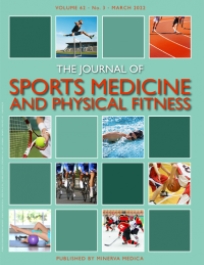Petruolo A1,2, Connolly DR3, Bosio A1, Induni M1, Rampinini E1.
1, Human Performance Laboratory, Mapei Sport Research Centre, Olgiate Olona, VA, Italy; 2, US Cremonese, Cremona, Italy; 3, Juventus FC, Sport Science Department, Torino, Italy.

ABSTRACT
Background: This study aimed to investigate the physiological profile of elite Bicycle Motocross (BMX) cyclists and assess the physiological and perceptual demands of a simulated BMX race. In addition, the neuromuscular fatigue induced by BMX race simulation was investigated.
Methods: Twelve male elite BMX cyclists performed two testing sessions. On the first day, incremental submaximal and maximal cycling tests were performed, as well as baseline measurements of muscle contractile qualities, a vertical jump test, short sprint cycling test and Wingate test. Following a recovery period of 48 h, athletes race performance times, physiological intensity and fatigue were determined before and after each heat (4 in total) via muscular evaluations, blood samples and perceptual ratings.
Results: During testing, cyclists attained a V̇ O2max of 55.7±4.8 mlmin-1kg-1; peak power output during a short cycling sprint of 1498±189 W and average during Wingate of 1344±158 W; counter movement jump peaks were 58.6±7.7 cm (height), 4625±768 W (power) and 64.3±7.5 Nkg-1 (force). During the BMX race simulation performance times improved slightly and perceived exertion increased, blood lactate and hydrogen ions concentrations significantly increased across heats while bicarbonate concentrations decreased (p<0.001). Similarly, significant decreases were observed for contractile properties (peak torque, p<0.001; maximal rate of torque development and relaxation, both p<0.001) at single and paired stimulations (10 and 100 Hz) across heats.
Conclusions: Elite BMX cyclists show high anaerobic characteristics (Wingate and sprint) and neuromuscular qualities (height and power jump), while the aerobic qualities are not comparable to those typical of road cyclists. BMX races appear to induce metabolic disturbance, peripheral fatigue and increase perceived exertion, however performance times across heats appears not to be affected.
J Sports Med Phys Fitness 2020 May;
PMID: 32406391 DOI: 10.23736/S0022-4707.20.10855-7